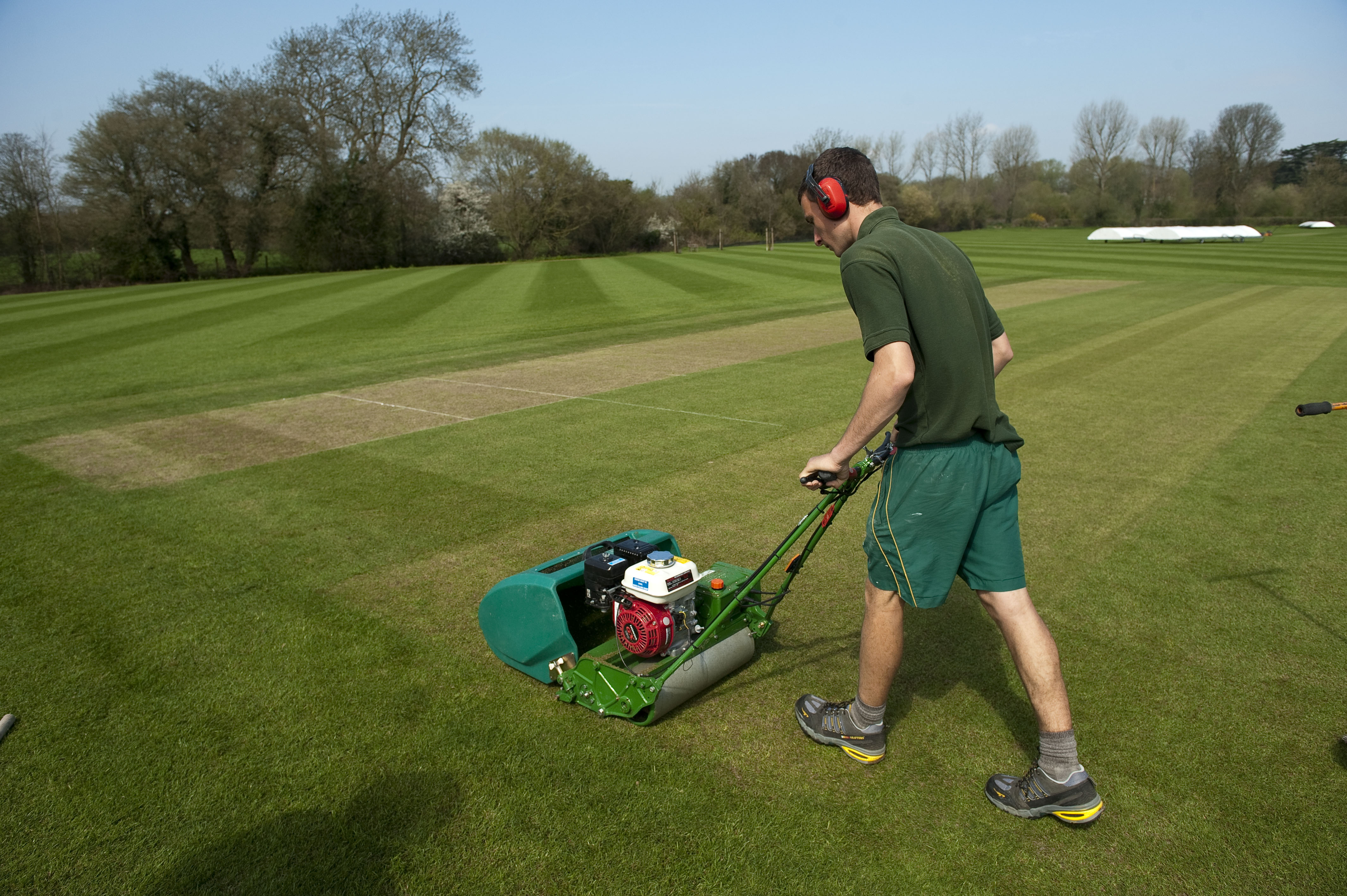Why pre-season mowing is important
Regular mowing, three to four times a week, is important not only so that it provides the right length of grass to facilitate good ball roll, but also to encourage the grass plants to thicken (tiller) and grow in the right way.
Maintaining the grass in the correct height range will help to prevent disease and moss, as well as ensuring that the woody base of the plant or the ‘crown’ does not become too high up in the plant, which might otherwise produce a lower-quality surface when the individual pitches are cut lower during pitch preparation.
Whilst not essential to the needs of the game, good presentation should be high on the agenda because it enhances the players’ enjoyment of the surfaces and demonstrates pride in your work. Mowing should take place as and when needed, making sure that never more than one third of the total length of grass is removed in any mowing window, and preferably rather less.
Method
Before the season it can help to cut the square with a sharp rotary mower fitted with a rear roller, particularly when the soil is more moist because it reduces weight and the suction of the mower helps to keep the surface clean (to remove leaves and other debris fro example). As you approach the season you can start to increase weight on the square (as part of a carefully managed programme of pre-season rolling) to do this you can use a properly adjusted pedestrian cylinder mower. Start with smaller width mowers and increase size (if available) prior to commencing pre-season rolling with a roller.
It is good practice to alternate the mowing directions from across the line of play during the winter, the two diagonals and in line of play, this helps with pre-season rolling and avoiding nap on the grass (when the grass grows in the direction of cutting). However as you apporrach the season (from March onwards), only cut in the line of play to avoid creating 'ghost stripes' that can remain apparent in prepared pitches. You should flip the direction of cut frequently to avoid forming a nap.
Clippings should always be collected on a cricket square because the nature of the soil means that it is not conducive to clippings being broken down quickly and thatch would quickly form.
Height of Cut
As the days lengthen and more light is available to the plant then mowing heights can be gradually reduced, arriving at the playing season mowing height (12-18 mm) a week or two before the first game.
The precise height of cut should be a decision based on how the sward is growing, prevailing light levels and the time of year, the standard of play and the frequency of mowing.
Pre-season mowing heights should aim to encourage a tighter sward but still leave enough leaf for good growth. Allowing the grass to grow much longer than 25 mm will cause plant density (the number of individual grass plants per square-metre) to reduce which can lead to challenges with pitch preparation. However - it is always better to mow too late than too soon when the square is too wet and will be damaged by the mower or the operator's feet. If in doubt - wait.
The aim is to choose a height that is manageable, promotes the health of the sward and the characteristics of the grass plant that are desirable for cricket, and of course provides a smooth ball roll during the season.


 Tweet
Tweet